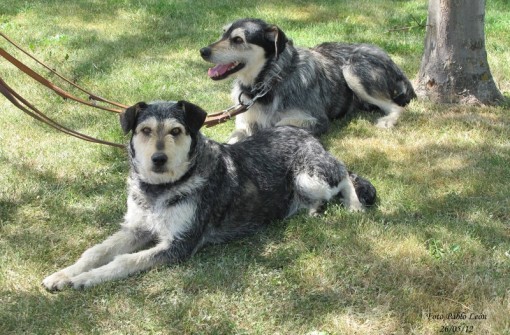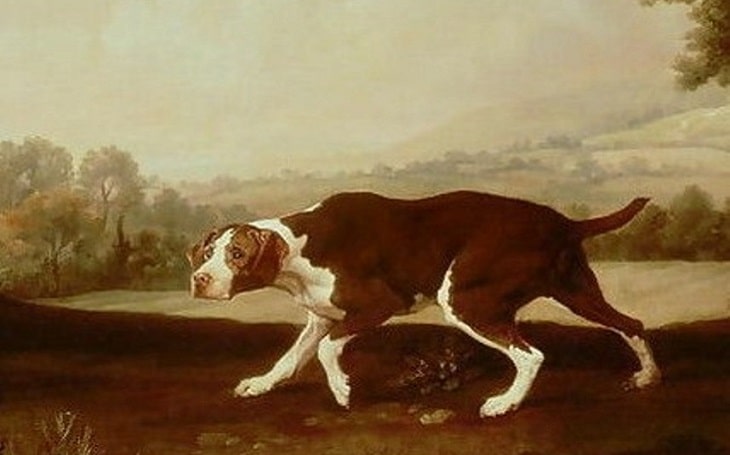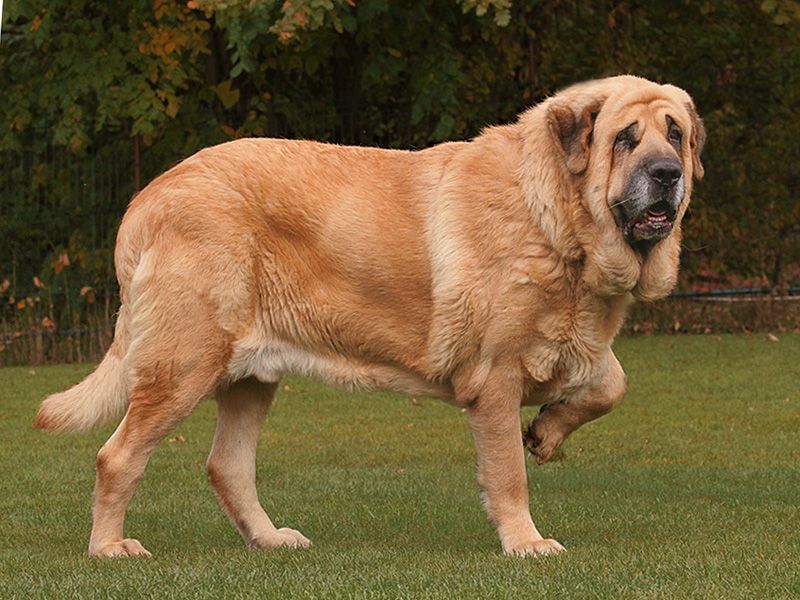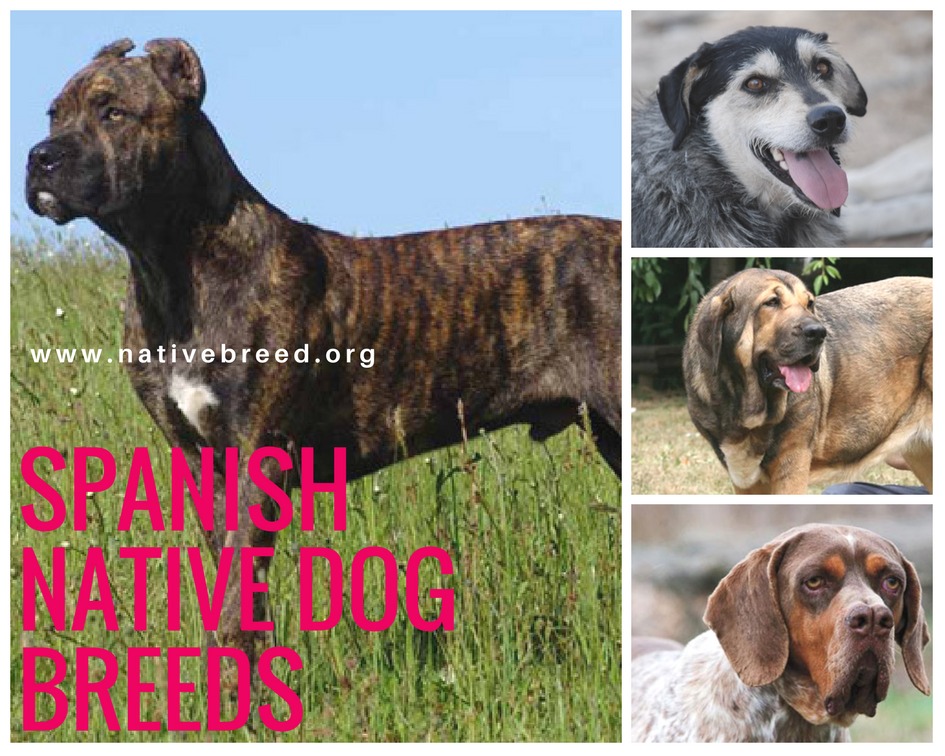1. Alano Español

Alano Español or Spanish Alano (English: Spanish Bulldog) is a large breed of dog of the molosser dog type, originating in Spain. The dogs have been used as cattle catch dogs, hunting, and guarding. The breed is also known for its former use during Spanish bullfights and is sometimes called the Spanish Bulldog in English.
The name of the breed comes from the Iranian tribe of Alani, nomadic pastoralists who arrived in Spain as part of the Migration Period in the 5th Century. These peoples were known to keep large livestock guardian dogs and pursuit dogs which became the basis for the many regional Alaunt types. The first written reference to the breed in Spain is in a chapter of the 14th century “Book of the Hunt of Alfonso XI” (Libro de la Montería de Alfonso XI) in which hunting dogs called Alani are described as having beautiful colours. Dogs of this type travelled with Spanish explorers and were used as war dogs (as was their role in Eurasia before migration) in the subjugation of Indian (Native American) peoples, as well as in the capturing of slaves.
Bull-baiting, done in the bullfighting ring with dogs of this type, was recorded by Francisco de Goya in his series on La Tauromaquia in 1816. It was outlawed in 1880.
Alanos were also used for hunting big game such as wild boar and deer. The Alano was used as a catch dog in Montería style hunting. There are two groups of people with dogs. The chase dogs (which are a different breed than the Alano) flush out the prey and chase them towards the second group of men and dogs. The Alano was used for catching the game when they arrived.
In 1840, the English dog dealer Bill George imported a Spanish Bulldog he called “Big Headed Billy”. He was used to increasing size in English Bulldogs.
In 1880, use of dogs in the bullfighting ring was outlawed, so the breed numbers began to dwindle as the work they performed began to change. The big game became rare, stockyards were modernized and no longer needed dogs to hold the cattle, using dogs in bullfights was outlawed, and by 1963 Alanos were thought to be extinct.
2. Carea Castellano Manchego

The Carea Castellano Manchego is a breed of dog originating in Castilla-La Mancha, (Spain).
Rustic, balanced, obedient and intuitive dog. It is used for herd management, to those who feel an innate attraction.
Medium / small size, well proportioned and slightly longer than tall, (ratio 1.1 to 1).
Head: 43–49 cm for males and from 42 to 48 cm females.
Weight: 12 to 18 kg. in males and 10 to 16 kg. in females.
3. Old Spanish Pointer

The Old Spanish Pointer, or Perro de Punta Español, was an extinct breed (or landrace) of dog originating in Spain, believed to be the ultimate ancestor of almost all pointing dogs.
Roman writers of the first century, Pliny or Sallustius, comment on the existence of dogs from Hispania that were used for hunting birds with nets. Centuries later, Muslim conquerors arrived on the Iberian Peninsula and brought the technique of falconry with them. These conquerors were pleasantly surprised to learn that Spanish pointers, trained by monks, displayed useful behaviours. The dog stopped when it found a bird and remained motionless until the hunter arrived. At this point, the falconry hunting technique joined with the Spanish Pointer as a perfect mechanism to locate and mark the position of prey. Since then, the skill set of the pointing dog has adapted to the technology involved in the hunt.
In 1644, Alonso Martinez del Espinar described it as “an animal of great work, and its breadth and agility is so great that from morning to night non-stop run; there are some so light that seem to fly above the ground, and when the dog is skilled in bumping tracking these birds multiply until these proceedings until it stops it that is that it wants which follows”
4. Spanish Mastiff

The mastín Español or Spanish Mastiff is a giant breed of dog from in Spain, originally bred to be a guard dog whose specialized purpose is to be a livestock guardian dog protecting flocks and/or herds from wolves and other predators.
The Spanish Mastiff (mastiff) originated in the Spanish territories of Asturias, Cantabria, Province of León and Province of Zamora.
In medieval times, it has accompanied the herds of sheep crossing from northern to southern Spain, defending cattle from attack by wolves and other predators. The mastiff had the protection of chunky metal necklaces with skewers. Its function was primarily protective, unlike its fellow Carea dogs, whose function is grazing, driving the herds in response to indications of the shepherd. In some places, it is known as perro merinero when it accompanies sheep of the Merino breed.
The first breed standard of the Spanish Mastiff was made by the FCI in 1946. In 1981 the Asociación Española del Perro Mastín Español was formed, who organized a breeding program looking for the kind of large and strong mastiff of the past times, and drafted a new breed standard focused on recovering the old cattle dogs, fit as pets, and as guard dog and defence.
